
Digital art refers to any artistic work or practice that uses digital technology as part of the creative or presentation process. It can also refer to computational art that uses and engages with digital media.
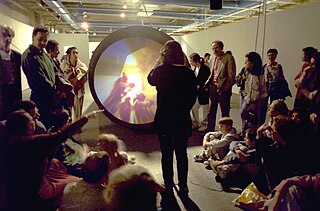
Interactive art is a form of art that involves the spectator in a way that allows the art to achieve its purpose. Some interactive art installations achieve this by letting the observer walk through, over or around them; others ask the artist or the spectators to become part of the artwork in some way.
Computer art is art in which computers play a role in the production or display of the artwork. Such art can be an image, sound, animation, video, CD-ROM, DVD-ROM, video game, website, algorithm, performance or gallery installation. Many traditional disciplines are now integrating digital technologies and, as a result, the lines between traditional works of art and new media works created using computers has been blurred. For instance, an artist may combine traditional painting with algorithm art and other digital techniques. As a result, defining computer art by its end product can thus be difficult. Computer art is bound to change over time since changes in technology and software directly affect what is possible.

Manfred Mohr is a German artist considered to be a pioneer in the field of digital art. He has lived and worked in New York since 1981.
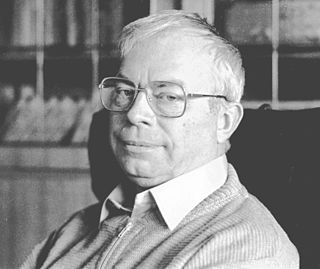
Georg Nees was a German academic who was a pioneer of computer art and generative graphics. He studied mathematics, physics and philosophy in Erlangen and Stuttgart and was scientific advisor at the SEMIOSIS, International Journal of semiotics and aesthetics. In 1977, he was appointed Honorary Professor of Applied computer science at the University of Erlangen Nees is one of the "3N" computer pioneers, an abbreviation that has become acknowledged for Frieder Nake, Georg Nees and A. Michael Noll, whose computer graphics were created with digital computers.

Kenneth Charles Knowlton was an American computer graphics pioneer, artist, mosaicist and portraitist. In 1963, while working at Bell Labs, he developed the BEFLIX programming language for creating bitmap computer-produced movies. In 1966, also at Bell Labs, he and Leon Harmon created the computer artwork Computer Nude .
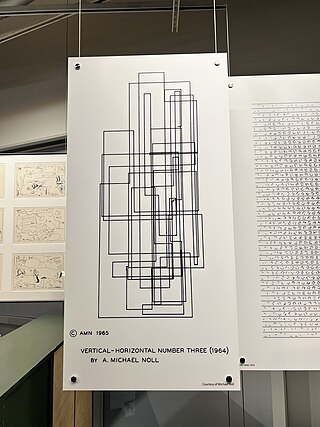
A. Michael Noll is an American engineer, and professor emeritus at the Annenberg School for Communication and Journalism at the University of Southern California. He served as dean of the Annenberg School from 1992 to 1994. He was a very early pioneer in digital computer art and 3D animation and tactile communication.
The Computer Arts Society (CAS) was founded in 1968, in order to encourage the creative use of computers in the arts.
Edward Ihnatowicz was a Polish cybernetic art sculptor active in the late 1960s and early 1970s. His sculptures explored the interaction between his robotic works and the audience.
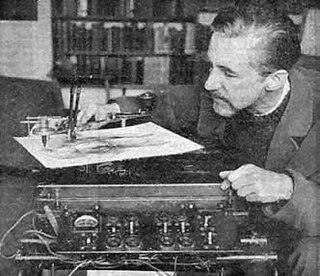
Desmond Paul Henry (1921–2004) was a Manchester University Lecturer and Reader in Philosophy (1949–82). He was one of the first British artists to experiment with machine-generated visual effects at the time of the emerging global computer art movement of the 1960s. During this period, Henry constructed a succession of three electro-mechanical drawing machines from modified bombsight analogue computers which were employed in World War II bombers to calculate the accurate release of bombs onto their targets. Henry's machine-generated effects resemble complex versions of the abstract, curvilinear graphics which accompany Microsoft's Windows Media Player. Henry's machine-generated effects may therefore also be said to represent early examples of computer graphics: "the making of line drawings with the aid of computers and drawing machines".
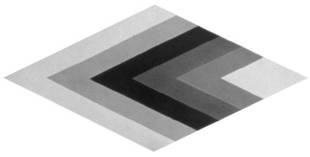
Systems art is art influenced by cybernetics, and systems theory, that reflects on natural systems, social systems and social signs of the art world itself.
Cybernetic Serendipity was an exhibition of cybernetic art curated by Jasia Reichardt, shown at the Institute of Contemporary Arts, London, England, from 2 August to 20 October 1968, and then toured across the United States. Two stops in the United States were the Corcoran Annex, Washington, D.C., from 16 July to 31 August 1969, and the newly opened Exploratorium in San Francisco, from 1 November to 18 December 1969.
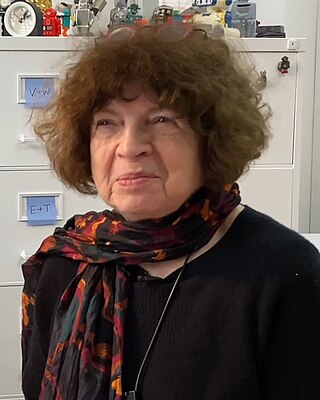
Jasia Reichardt is a British art critic, curator, art gallery director, teacher and prolific writer, specialist in the emergence of computer art. In 1968 she was curator of the landmark Cybernetic Serendipity exhibition at London's Institute of Contemporary Arts. She is generally known for her work on experimental art. After the deaths of Franciszka and Stefan Themerson she catalogued their archive and looks after their legacy.
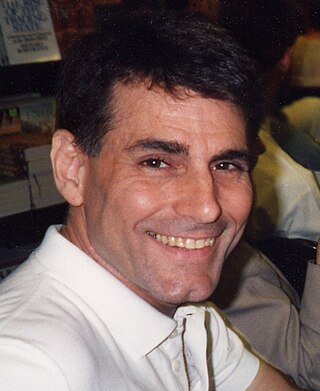
Timothy Binkley, is an American philosopher, artist, and teacher, known for his writings about conceptual art and aesthetics, as well as several essays that helped to define computer art. He is also known for his interactive art installations from the late 1980s and early 1990s.
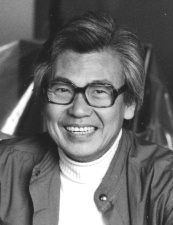
Wen-Ying Tsai was a Chinese-American pioneer cybernetic sculptor and kinetic artist best known for creating sculptures using electric motors, stainless steel rods, stroboscopic light, and audio feedback control. As one of the first Chinese-born artists to achieve international recognition in the 1960s, Tsai was an inspiration to generations of Chinese artists around the world.

Ernest Edmonds is a British artist, a pioneer in the field of computer art and its variants, algorithmic art, generative art, interactive art, from the late 1960s to the present. His work is represented in the Victoria and Albert Museum, as part of the National Archive of Computer-Based Art and Design.
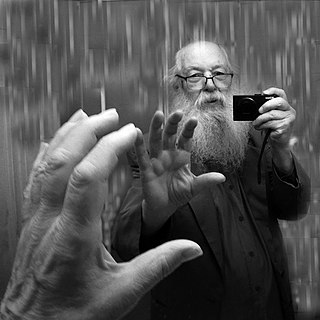
Alex Kempkens is a German photographer, photojournalist and computer artist. He also writes articles and curates exhibitions. Kempkens is an autodidact.

William Fetter, also known as William Alan Fetter or Bill Fetter, was an American graphic designer and pioneer in the field of computer graphics. He explored the perspective fundamentals of computer animation of a human figure from 1960 on and was the first to create a human figure as a 3D model. The First Man was a pilot in a short 1964 computer animation, also known as Boeing Man and now as Boeman by the Boeing company. Fetter preferred the term "Human Figure" for the pilot. In 1960, working in a team supervised by Verne Hudson, he helped coin the term Computer graphics. He was art director at the Boeing Company in Wichita.
Media art history is an interdisciplinary field of research that explores the current developments as well as the history and genealogy of new media art, digital art, and electronic art. On the one hand, media art histories addresses the contemporary interplay of art, technology, and science. On the other, it aims to reveal the historical relationships and aspects of the ‘afterlife’ in new media art by means of a historical comparative approach. This strand of research encompasses questions of the history of media and perception, of so-called archetypes, as well as those of iconography and the history of ideas. Moreover, one of the main agendas of media art histories is to point out the role of digital technologies for contemporary, post-industrial societies and to counteract the marginalization of according art practices and art objects: ″Digital technology has fundamentally changed the way art is made. Over the last forty years, media art has become a significant part of our networked information society. Although there are well-attended international festivals, collaborative research projects, exhibitions and database documentation resources, media art research is still marginal in universities, museums and archives. It remains largely under-resourced in our core cultural institutions.″
Robert W. Mallary was an American abstract expressionist sculptor and pioneer in computer art. In the 1950s and 1960s, he was renowned for his Neo-Dada or "junk art" sculpture, created from found materials and urban detritus, pieced together with hardened liquid plastics and resins. Mallary's work is represented in permanent collections such as the Museum of Modern Art, the Whitney Museum of American Art, the National Gallery of Art in Washington, D.C., as well as the Victoria and Albert Museum and the Tate Modern in London.















